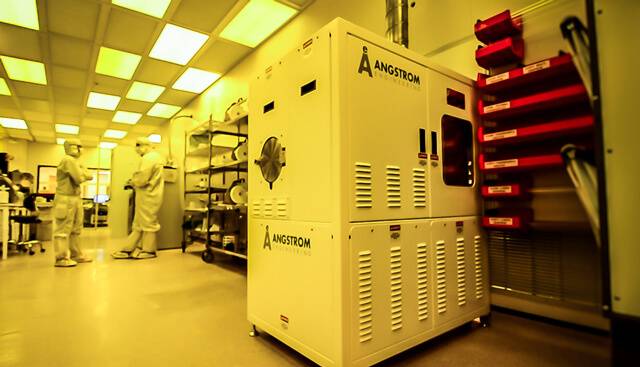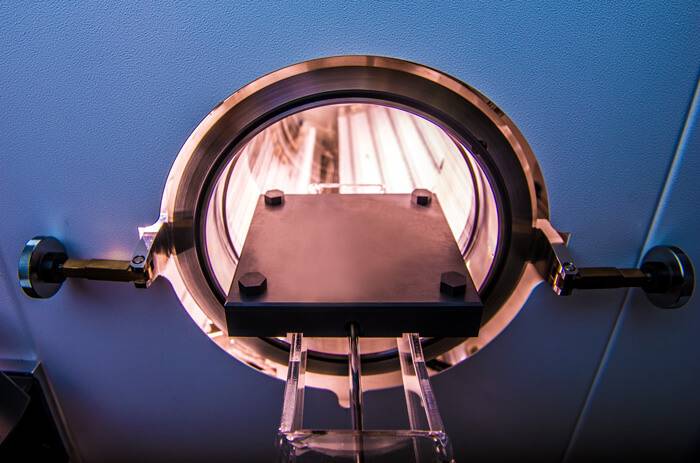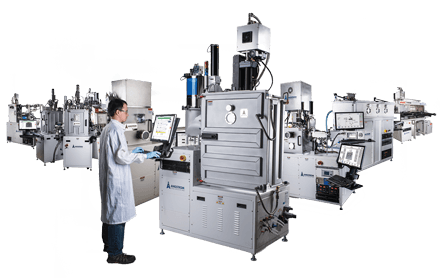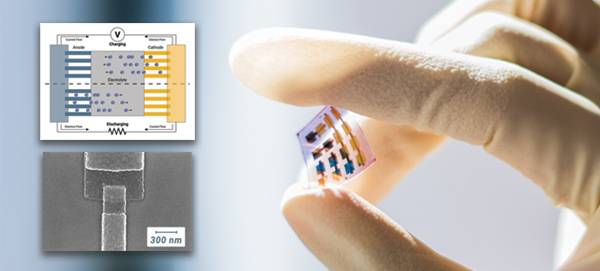Thermal LPCVD
Reactions that occur in low pressure chemical vapor deposition (LPCVD) must be carried out at higher temperatures. Thermal LPCVD reactors come in two variations: hot-wall and cold-wall. In hot wall reactors, the furnace tube is surrounded by bulbs that heat its contents radiatively.


In cold wall reactors, the substrate itself is heated. The choice of reactor type will be determined by two main factors: the thermodynamics of the process, and the throughput requirement. Thermodynamics will determine whether deposits will form favorably on the substrate or on the tube walls, with the ideal case being the substrate. In most cases, hot wall reactors will accumulate more deposits and thus require more maintenance.
The second factor is throughput. In hot wall reactors, many substrates can be loaded at once, whereas in cold wall reactors, due to substrate heating requirements, fewer samples can be loaded.
CVD can be carried out at atmospheric pressures as well. It is worth mentioning that extremely hard metallurgical coatings can be deposited at high rates in atmospheric pressure reactors which are widely used in the production of tools for the metalworking industry.

I will say it again: Angstrom Engineering provides the best support I’ve ever experienced on instrumentation.
Thank you for helping us!
Raluca Gearba – Facility Manager – U of Texas Austin
The most efficient way to determine your needs is to speak with one of our application specialists.
Let’s discuss it.
We look forward to finding the right solution for you.







